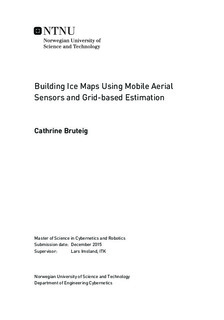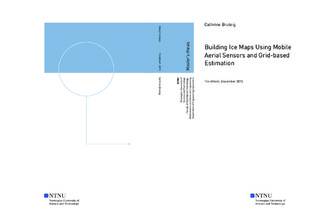| dc.description.abstract | Operations in the Arctic seas are becoming more common as the area contains large amounts of oil and gas. For these operations, control and detection of ice are necessary to avoid interference with the production. The focus of this project was to use the recursive grid-based estimation method, Occupancy Grid Mapping, to locate icebergs using an Unmanned Aerial Vehicle (UAV). The Occupancy Grid Mapping is not usually used for iceberg localization from the air. The goal of this project was, therefore, to show how Occupancy Grid Mapping can be used for iceberg localization with a UAV. The Occupancy Grid Mapping was also implemented and simulated with a path planner to show how Occupancy Grid Mapping can be used with other algorithms. The path planner algorithm and framework used in this project was created
by the PhD student Anders Albert.
The UAV was simulated to fly over a given area, and the measurements from the UAV was used by the Occupancy Grid Mapping to calculate the probability of occupancy. Grid-based maps of the area were created based on the probability of occupancy calculated by the Occupancy Grid Mapping. These maps showed where icebergs were located and which parts of the area were empty. The accuracy of the Occupancy Grid Mapping estimation was best when the UAV measurement frequency was high. When the Occupancy Grid Mapping was simulated with the path planner, a proposed procedure was used to calculate the optimization variable of the path planner. The optimization variable was based on the probability of occupancy calculated from Occupancy Grid Mapping and time since the observation took place. The simulation results showed that the Occupancy Grid Mapping can be used by a path planner to find the optimal path between the icebergs.
This project showed that grid-based maps produced by Occupancy Grid Mapping can be used for iceberg localization. In further work, some adjustments of Occupancy Grid Mapping are proposed for further experimentations. | |

